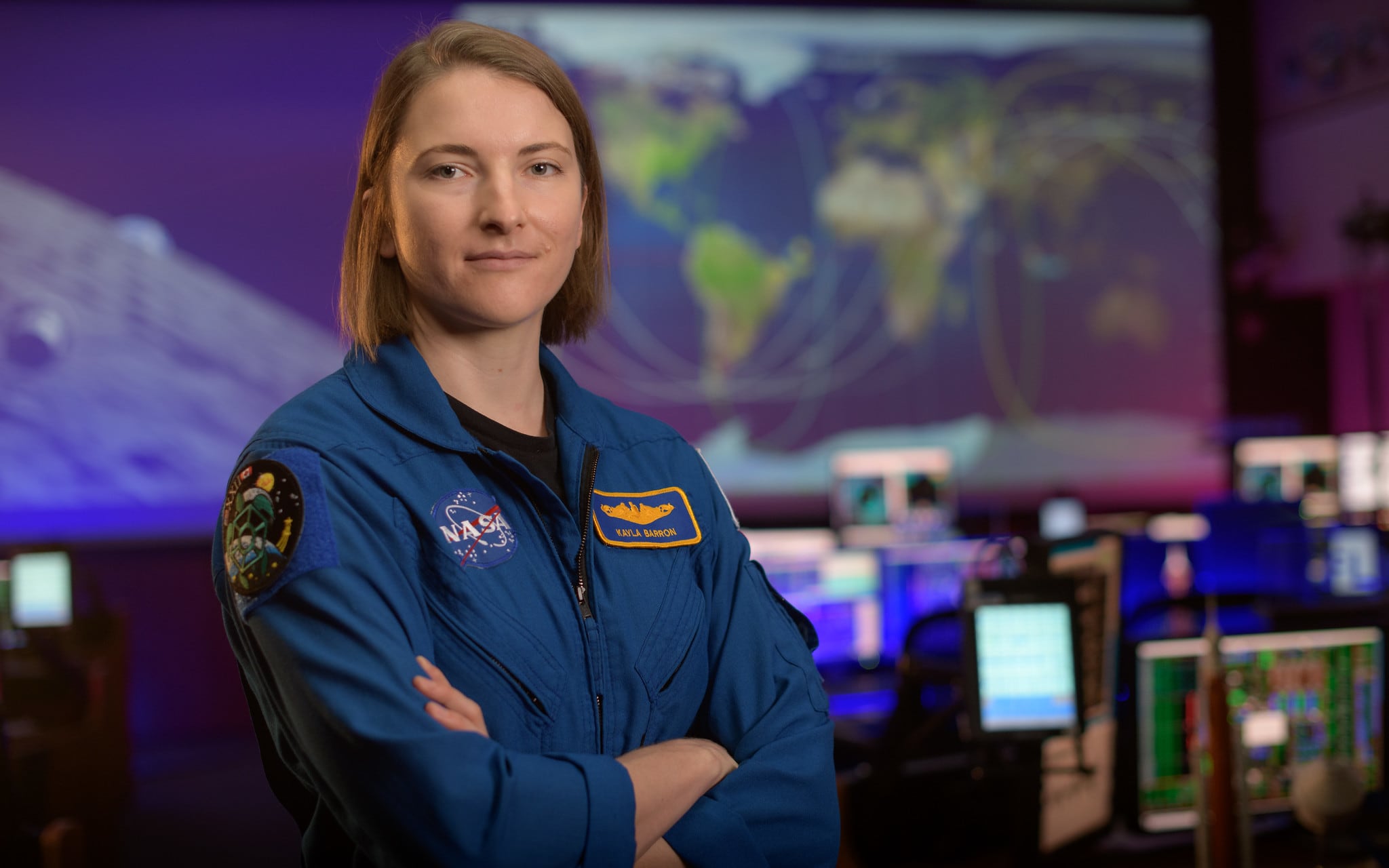ANNAPOLIS, Md. — Some kids want to be astronauts when they grow up. Not Kayla Barron.
She wanted to be a Navy officer, so that’s what she did. After graduating from the Naval Academy in 2010, Barron, 33, earned a master’s degree in nuclear engineering, became a submarine warfare officer and was deployed three times to the Pacific. Then, she returned to Annapolis to serve as a flag aide, which is a personal assistant to a high-ranking official, to former Superintendent Vice Adm. Walter Carter.
If not for that job, Barron may not have become one of two Naval Academy graduates and former athletes to be selected for the Artemis Team, which “will lead humanity forward to the moon and prepare us for the next giant leap, the exploration of Mars,” NASA says. The mission, announced under the Trump administration, will be NASA’s first voyage to the lunar surface in half a century and its goal is to land the next man and first woman there by 2024, though experts claim the timeline could stretch much longer.
Barron and former Navy soccer player Nicole Mann, 43 will be fifth and sixth Naval Academy graduates to visit the moon and the first since 1972.
RELATED
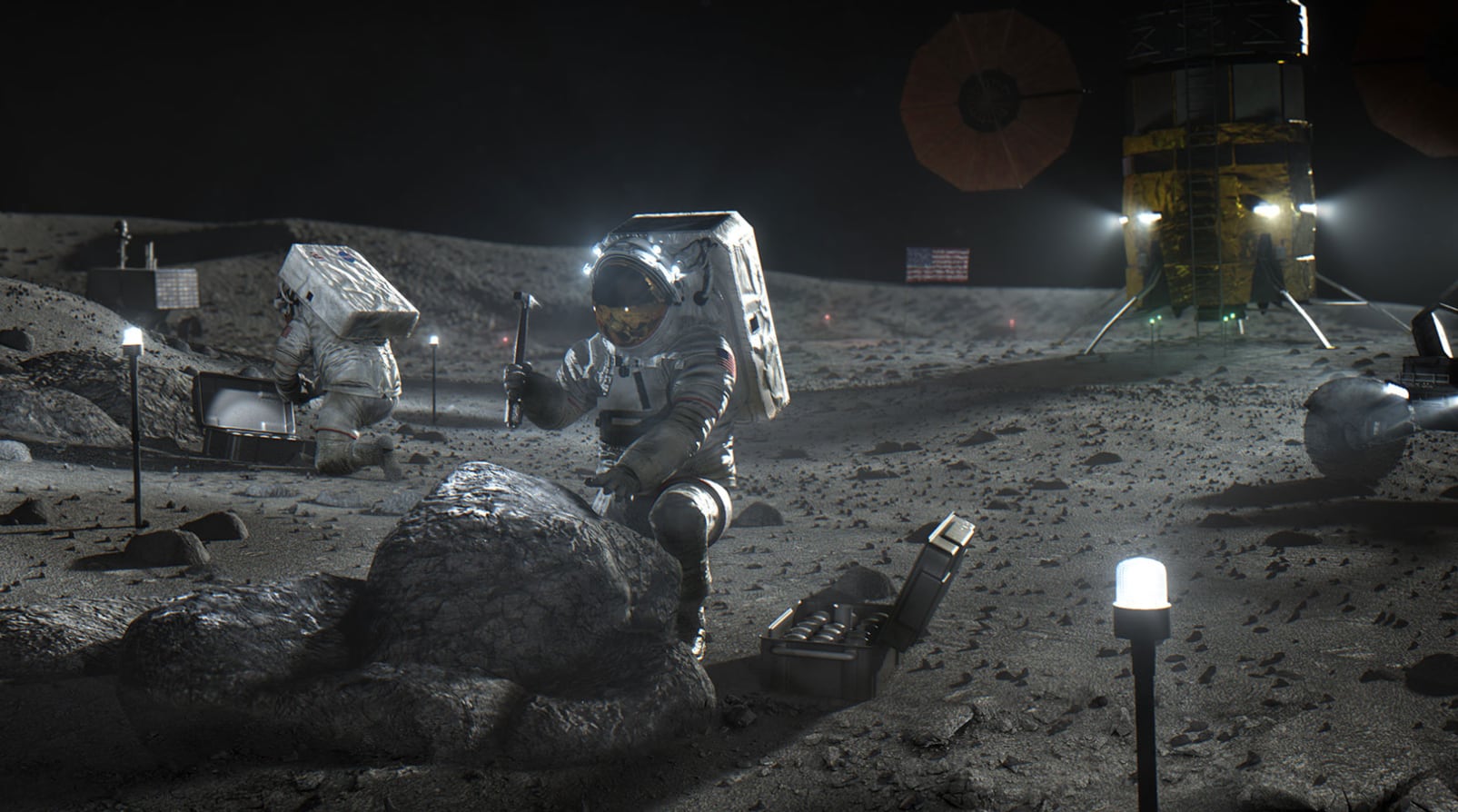
When Barron applied to become a NASA astronaut, she thought she was sending her name to the void. But as one of the first women commissioned into the submarine community, it’s not like she was incapable of reaching new heights.
But becoming an astronaut wasn’t something she would’ve considered had she not walked in elite circles as the superintendent’s flag aide. It was there that the former track and cross-country runner met Naval Academy graduate and NASA astronaut Kay Hire, who told her about building the early Space Station and all the engineering that went into it.
“The more I listened to her story, the more it sounded so much like living and working on a submarine,” Barron said. “Living and working in the vacuum of space, the same things can kill you, you need the same things to keep you alive. And, most importantly, you need the same kind of team in order to accomplish a mission.”
So Barron applied and waited.
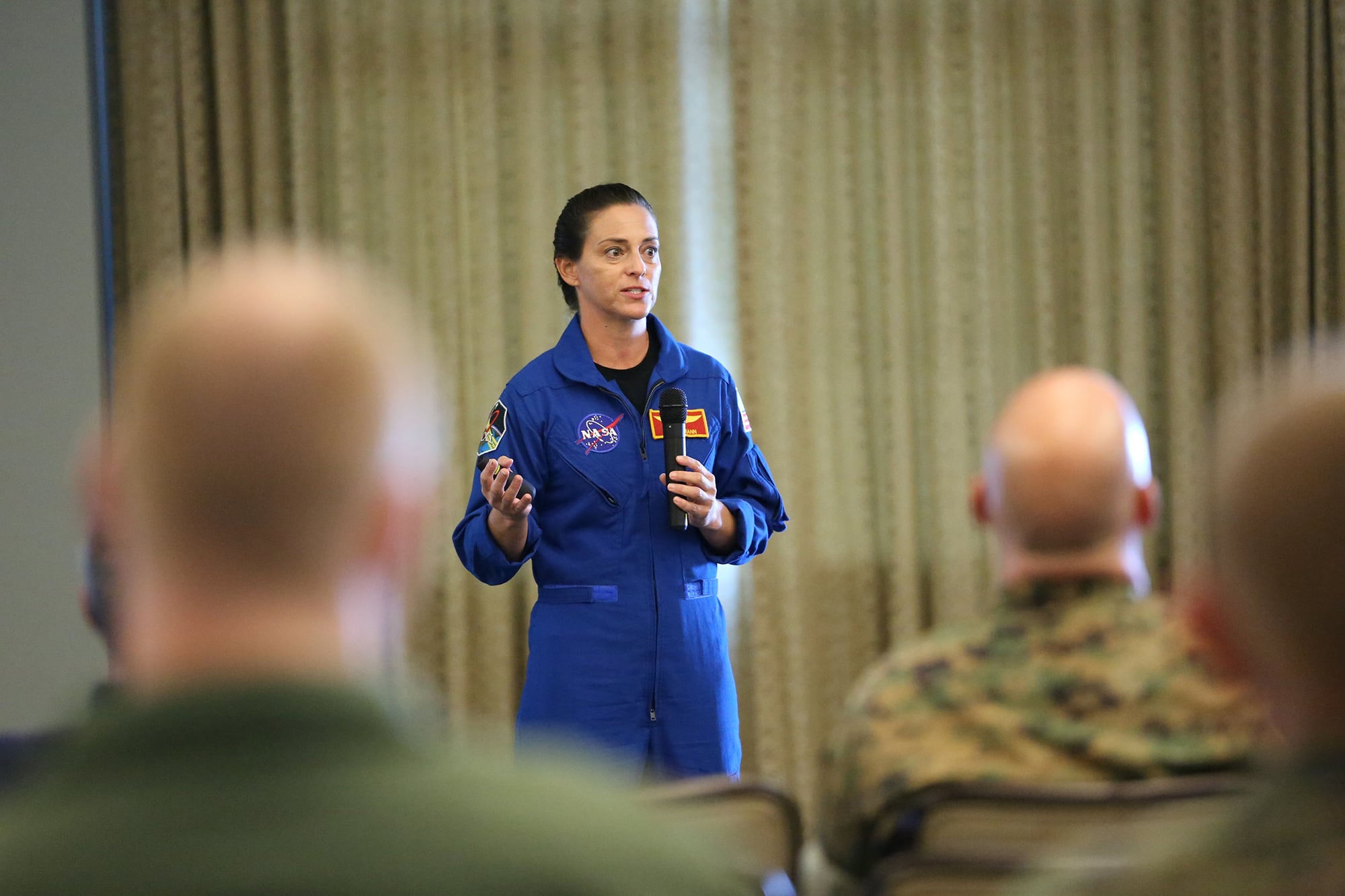
Years earlier, Mann felt a similar way. After commissioning in 1999, the Marine Corps lieutenant colonel earned a master’s degree in mechanical engineering from Stanford, logged 2,500 flight hours on 25 types of aircraft and 47 combat missions in Iraq and Afghanistan.
But when NASA opened applications, Mann thought it would be too crazy. Her husband, Travis, convinced her it would be crazy not to try.
Throughout the year-and-a-half long interview process that involved a series of trips to Houston, Mann thought, “Holy cow, there’s no way they’re gonna pick me.”
“Before, (it was like) ‘This is a great opportunity, I should never pass this up.’ Then after that second interview, so you’d have this feeling like, ‘OK, this is where I feel like I belong,’” Mann said.
She did belong, and in 2013 NASA selected her. Barron reported for astronaut duty in 2017.
On Dec. 9, NASA announced they were among 18 astronauts chosen to become the Artemis Team.
In some ways, they’re still doing their former military jobs but with an astronomical flair. They study how to live and work in space and the mechanics of the International Space Station and spacecraft. They don spacesuits, dive into a pool and “spacewalk” underwater in a scale model of the space station for upward of six hours.
“I still have that same fundamental sense of fulfillment that (I’m) serving our country and working towards something for all of humanity that’s so much bigger than (me),” Mann said. " ... It’s that drive that’s deep in your heart that really pushes you forward.”
RELATED
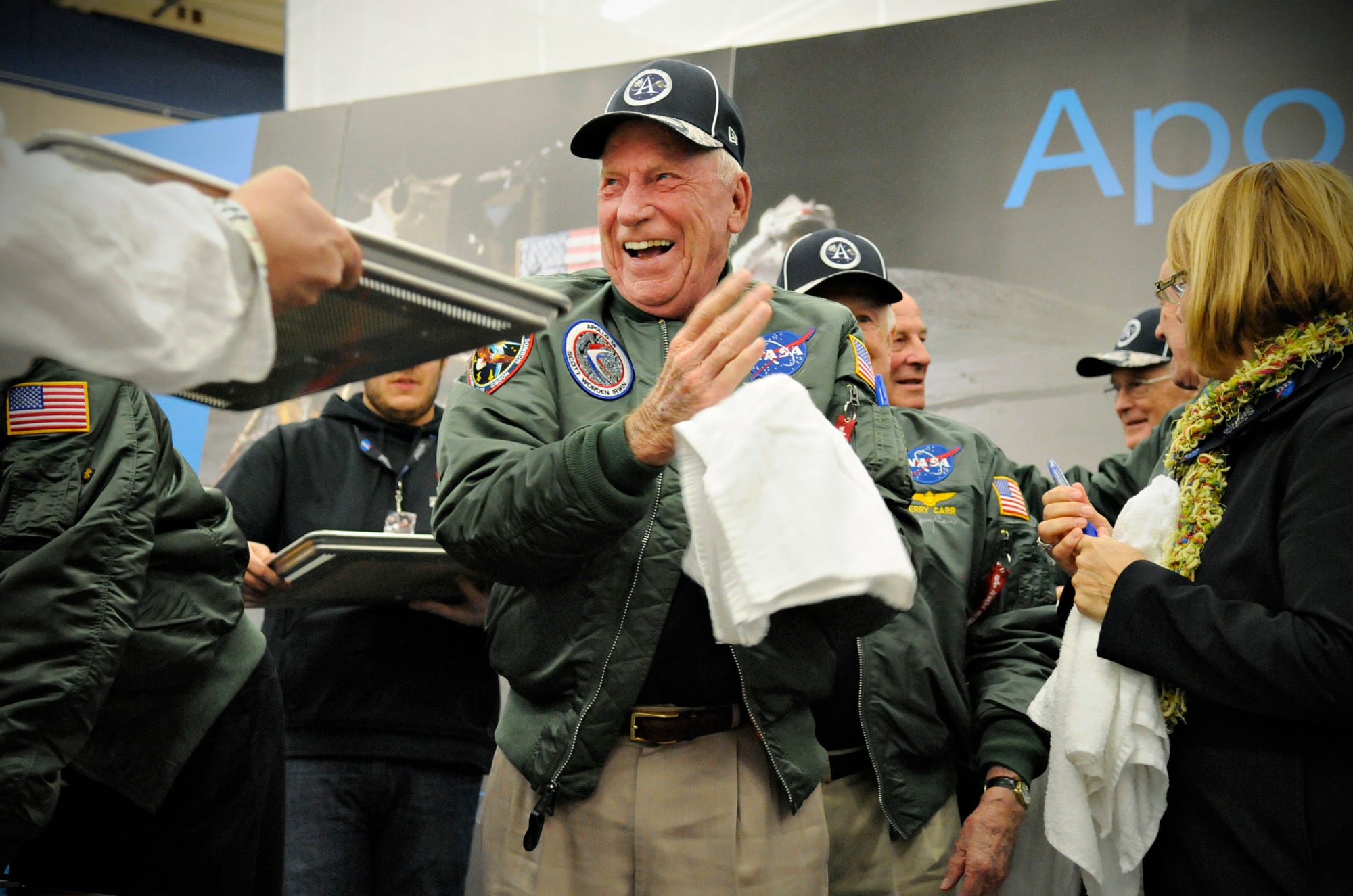
All the Artemis rookies hope they’ll be picked for a space mission before the big one, Barron said. She doesn’t yet know if she’ll be one of them.
Mann, on the other hand, is preparing for one now. She’s slated for the first crewed flight test on Starliner, a Boeing capsule that plans to journey to the International Space Station later this year.
Both of the women know within years they could be walking on the moon, a place only men have stepped on before.
They may need to wait longer than a few years, as President Biden’s administration and NASA still needs to cross numerous logistical hurdles that will likely delay the process. NASA administrator Jim Bridenstine stepped down on Jan. 20 and a new administrator has not been named under President Biden.
Still, Barron said all the astronauts sort of pinch themselves every morning at their coming future.
Though men like Buzz Aldrin and Neil Armstrong who walked the moon are legendary individuals, Barron said spaceflight is a team sport. It’s bringing different kinds of experts together to contribute to a common goal.
RELATED
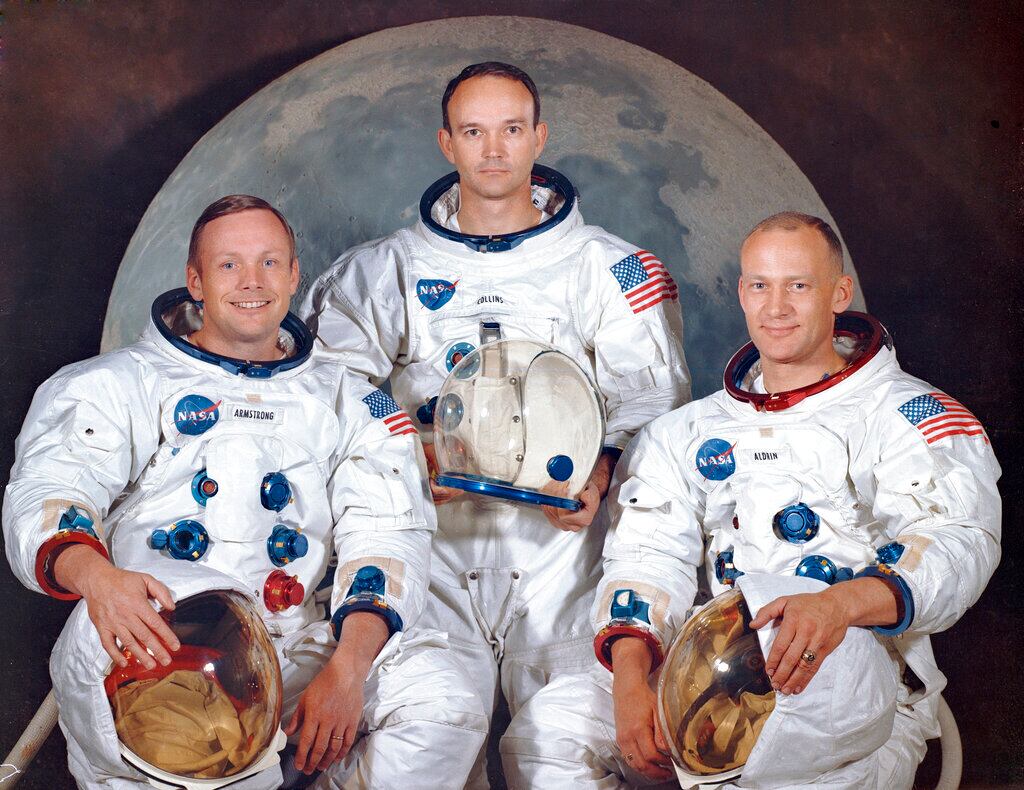
She views the mission to the moon as another chance to contribute to the greater goal of humanity.
“You look up at the moon at night and imagine yourself standing there, looking back at the Earth — it kind of blows your mind,” Barron said. " ... It’s super inspiring and I think it’s something that motivates me to do everything I can to contribute to the team that’s going to do that, whether I’m the one standing on the moon or it’s one of my friends standing on the moon looking back at us.”
Mann sees how her 8-year-old son talks to his friends about his mom and the excitement in kids’ eyes when she visits schools as a speaker. She sees the gears turning in their little heads, making plans to become astronauts, doctors, engineers, writers. It puts things in perspective.
“I think and I hope and I really do believe that it is going to help tremendously to unite people, not just in the United States but people across the world,” Mann said, “because this is truly an international effort. I feel like it will unite people in that common goal and that common effort.”
